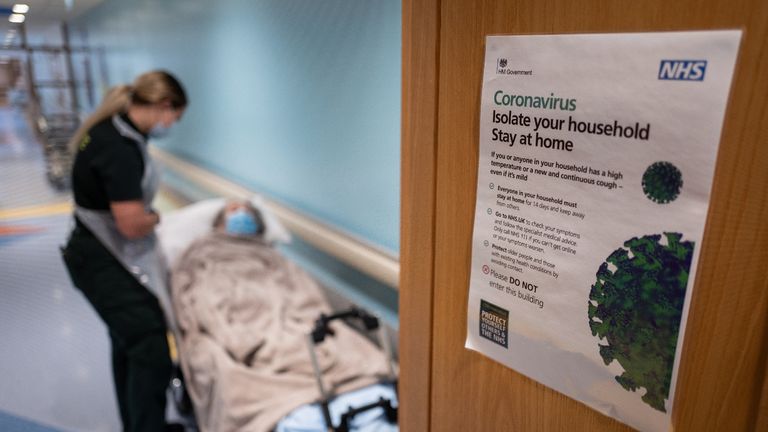A medical expert has claimed that if the vaccine developed by Oxford University and AstraZeneca was rolled out “24/7” it could cut the time taken to immunise a large part of the UK population by half – from 50 weeks to 25 weeks.
The jab, which unlike the Pfizer one does not have to be stored at ultra low temperatures, could be approved by regulators for use in the coming days.
It comes as hospital admissions are nearing the level of the first peak, with one ambulance service reporting that Boxing Day was one of its busiest ever days.
There were 21,286 people in hospital with coronavirus in the UK on 22 December, the last day for which government figures are available.
This is only slightly less than the 21,683 patients recorded on 12 April.
Dr Bharat Pankhania, a senior clinical lecturer at the University of Exeter, told Sky News that the Oxford vaccine “will be the one that allows us to immunise a lot of people in a short period of time.
“It is also easier to give and therefore you can carry it to nursing homes where people cannot come to the immunising centre.”
He cautioned: “It will still take about 50 weeks to immunise 50 million people.” But he said a “24/7” operation could cut that to 25 weeks.
“It can be done. We’re an affluent nation, we’ve got the logistics, the skills to do these things.”
Dr Pankhania also dismissed reports that the UK could be free of lockdowns by February if the Oxford vaccine is rapidly deployed.
He said: “How are you going to immunise so many people by February in the midst of an apparently more infectious strain and rising case numbers? If you’re going to achieve that you need to double-up, triple-up on the immunisation process when the vaccine is licensed.”
Meanwhile, the London Ambulance Service said Boxing Day was one of its “busiest ever days”, with 7,918 calls – up by more than 2,500 compared with the same day in 2019.
The numbers were so high that the service was forced to get help from other services across the South.
Sky’s Sadiya Chowdhury, reporting from outside the Queen’s Hospital in Romford, Greater London said patients there were being treated inside ambulances “because they don’t have enough beds left – that’s how bad the situation is”.
And a consultant at Southampton general hospital told The Guardian of a “scary” situation with a big rise in COVID cases.
They said: “Our general intensive care unit footprint is now completely overfull of COVID patients.
“We have expanded our ICU by 10 extra beds to take ICU patients from both Portsmouth and Kent as they are so hard-pressed. [The situation] is under control so far but unpleasant and scary.”
Health service chiefs have warned NHS care providers nationally that they should continue to “plan on the basis that we will remain in a level four incident for at least the rest of this financial year [until early April] and NHS trusts should continue to safely mobilise all of the available surge capacity over the coming weeks”.
There are also signs of stress in Wales, as a surgeon there warned that life-saving care for non-COVID patients was under threat if critical care units continued to fill up.
Shakir Mustafa, a consultant surgeon at the Cwm Taf University Health Board, told Sky News critical care units across South Wales were reaching capacity.
“If it’s filled with COVID patients, it does not mean that we’re just dealing with COVID and not dealing with anything else,” he warned.
“It does mean that we are unable to physically have someone who’s had a bleed after giving birth, for instance – or had a burst appendix, or somebody suffering from sepsis.
“We’d like to look after all our patients and we’re at a situation where this is under threat.”
On Sunday, the government said a further 316 people had died within 28 days of testing positive for COVID-19, bringing the UK total to 70,752.
As of 9am on Sunday, there had been a further 30,051 lab-confirmed coronavirus cases.
However, Scotland is not releasing death figures between 24 and 28 December and Northern Ireland is not releasing case or death figures during the same period.
It comes as more than 24 million people – or 43% of the population – are in England’s highest level of restrictions.
Scotland is also in Level 4 restrictions, a stay-at-home order is in place across Wales, and Northern Ireland is in a six-week lockdown.

